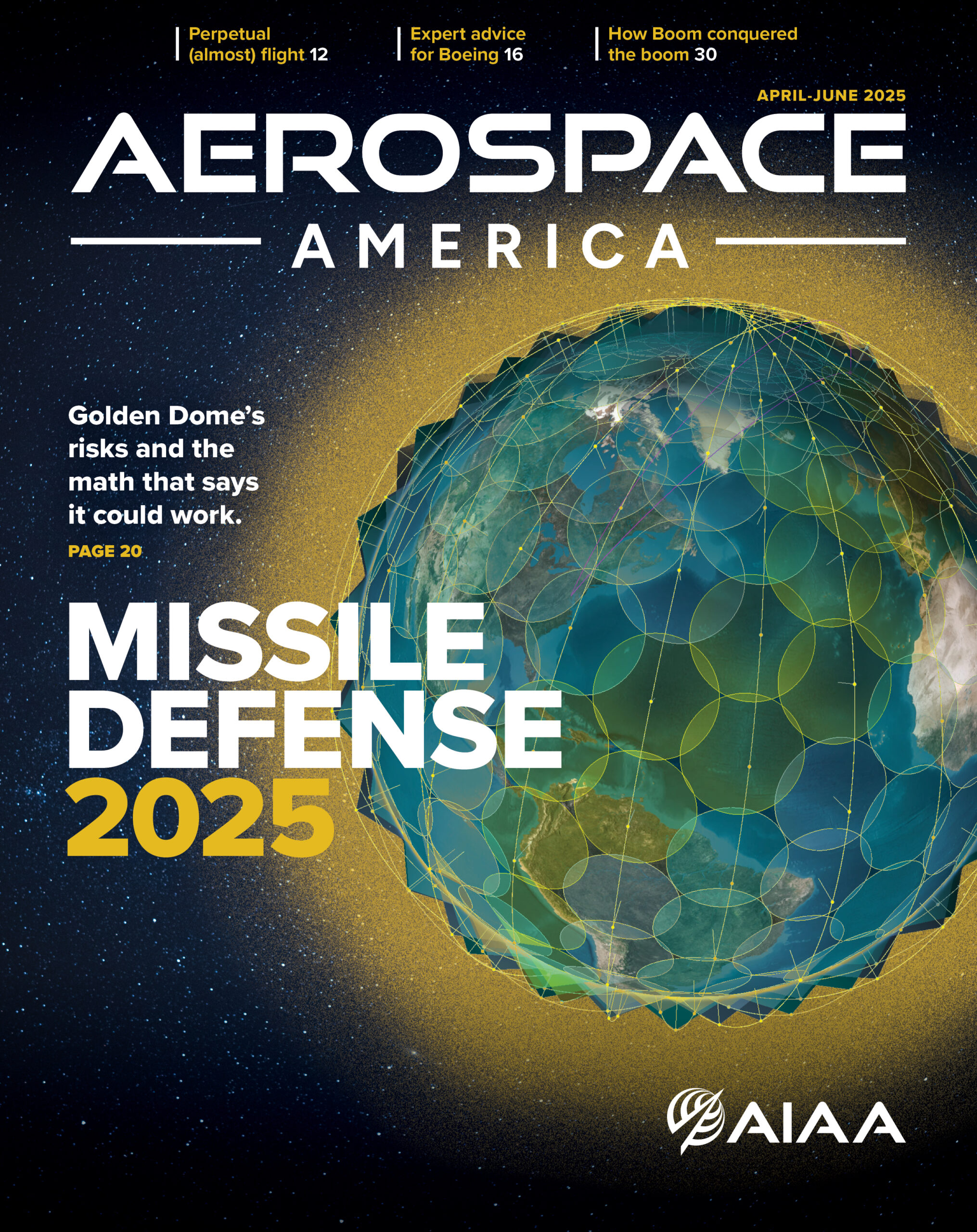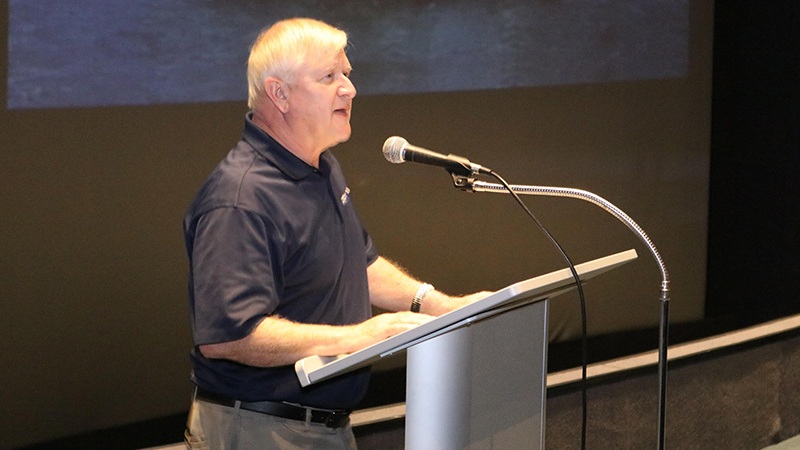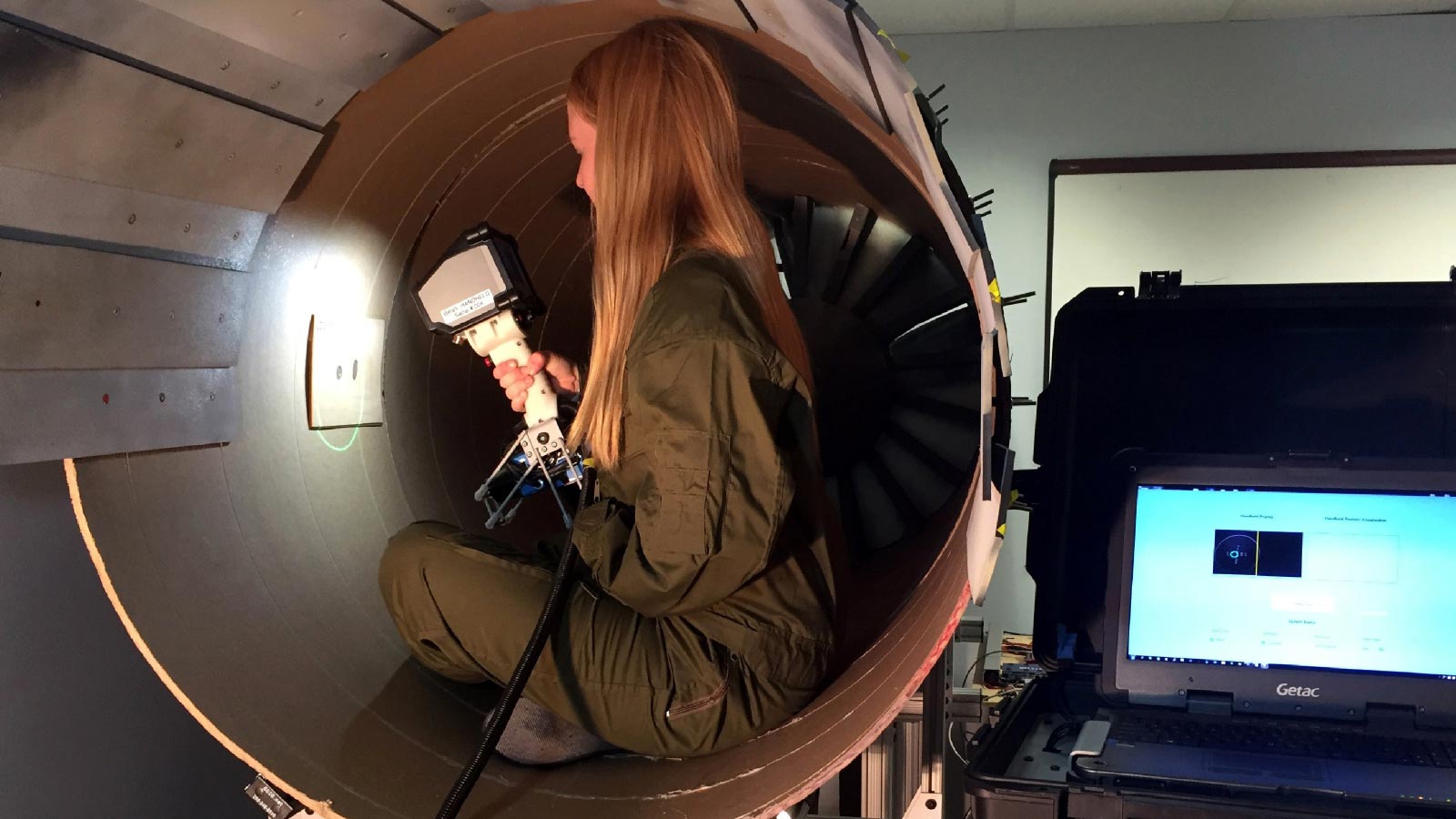Stay Up to Date
Submit your email address to receive the latest industry and Aerospace America news.
The U.S. Air Force Research Lab will spend much of 2018 taking a fresh look at its approach to science and technology
Jack Blackhurst, the executive director of the U.S. Air Force Research Laboratory, had a few months earlier settled in his office at the lab’s headquarters in Ohio when Heather Wilson, the Trump administration’s choice for Air Force secretary, handed down a yearlong assignment. The task: Report back by September 2018 with ideas for the basic and applied technologies AFRL should be pursuing, a plan to speed up delivery of results, and a recommendation for the optimal size and structure of AFRL by 2030.
“I think the secretary is challenging us to think differently, and you don’t get this opportunity very often, from a leadership level,” Blackhurst says.
He manages the science and technology work at AFRL’s facilities, including one at Wright-Patterson Air Force Base in Ohio that’s focused mainly on aviation, and another at Kirtland Air Force Base in New Mexico, that’s home to the AFRL Space Vehicles Directorate. Blackhurst works closely with Maj. Gen. William Cooley, the AFRL commander, to make efficient use of the $2.5 billion supplied annually by the Air Force, plus $2.3 billion from other government agencies. He is also responsible for engagement and outreach with other laboratories and communities, and he manages the lab’s 5,000 civilian workers. The workforce also consists of 4,000 contractors and 1,000 military members.
In the review, AFRL will consider adopting aspects of commercial business models to make it more agile and flexible and better positioned for fast-development of technologies. That focus raises structural issues too: “The question is, when you look at the AFRL in 2030, is it a 6,000-person workforce, or is it 3,000 or 1,000?” Blackhurst asks. “Those are the alternative futures we’re going to be looking at this year.”
Blackhurst also will examine whether the Air Force is investing enough in science and technology. “We’re currently at about 2 percent of the Air Force budget; pharmaceuticals are about 10 percent,” Blackhurst says. “The question is, should that 2 percent change; should it increase or not?”
New age
Today, AFRL follows an industrial age acquisition and laboratory business model, Blackhurst says. Now it needs to be restructured for the information age by working more with nontraditional companies instead of just the big defense contractors, he adds.
Typically, AFRL’s science and technology work has started with the physics and chemistry of a concept, then bench testing to evaluate its properties and capabilities, and three to five years of demonstrations, plus five to 10 years to develop it into something advanced enough for an acquisition program, Blackhurst says.
“That’s probably the old model of how we’ve done business, because there hasn’t been necessarily a demand saying: ‘I need it in a year; I need it in two years; I need it in five years,’” he says. “It has evolved at its own pace, per se. And I think the change is, now we’re being asked to be more responsive, and looking to new ways of doing business.”
Blackhurst wants to embrace process innovations that are starting to be rolled out elsewhere in the Air Force, changes that are modeled on the efficiency of companies that don’t rely on government contracts for profits. For example, the Air Force in 2018 will try assigning software coders to its air operations centers to make code changes overnight. That will be a big change from the service’s traditional process of ordering up software improvements and embarking on a long testing process before full deployment.
“In the commercial industry, that’s how they do business today,” Blackhurst says. “If I needed that fixed tomorrow, I’d get 10 or 12 coders together, and I’d have that fixed. I wouldn’t wait three years to implement it through a process. And you can see that today in the airline industry and in the computer industry, and they stitch things very quickly as you go through that, and so we’re going to try that kind of philosophy out here over the next year.”
In with the millennials
Changing workforce demographics will also play a role as AFRL overhauls its processes and research portfolio in the coming years toward an entirely new business model by 2030. The average age of an AFRL employee is about 45, which means an exodus of researchers is coming over the next five to 10 years.
“We have the millennial generation, we have the next generation coming after the millennials,” Blackhurst says. “They have a different view of the world, so the question is: How do we need to posture ourselves as a research laboratory to attract, recruit, retain this next generation of scientists and engineers as they come into the workforce?”
AFRL also needs to adapt to a more mobile workforce just as science and technology companies in the private sector must, Blackhurst says. That could mean adjusting to workers who stay for a short time, and those who circle back for another term after an initial departure.
“We know how industry is doing it today, and they’re looking at people coming to work for them knowing full well that they’re not going to be lifers,” he says. “A person comes in the laboratory today and then 30 years later, they retire. That may not be the model of the future, and so from a workforce agility perspective, we need to prepare for that.”
The lab will also look at its full-time to part-time employee ratio, whether it should be more evenly split or mostly part time in the future, and whether to adopt a rotation work model like DARPA, where employees may work just four years on a program and then leave.
Fail fast
At the same time AFRL is preparing its report for the secretary of the Air Force, AFRL’s commander, Cooley, is asking the lab’s managers to feed recommendations into the report on how to push technology from the lab into the field more quickly.
Air Force leaders are pushing AFRL to adopt a “fail fast” motto, Blackhurst says, which means “let’s go try an idea, but let’s not spend 10 years on that idea. Let’s try it for a year, see if it works, and if it doesn’t work, let’s move on.” The idea is to “fail fast initially,” and prove whether the technology works quickly, before establishing programs-of-record to develop and acquire operational versions.
In this area, AFRL again is looking at examples it could emulate from the commercial sector. It’s looking to companies that include Google and Amazon, and how they develop and adopt technology quickly. “Why are we not doing that?” Blackhurst says. “Why are we not moving faster in terms of getting our record systems out there? Back in the ’50s and ’60s, we used to produce airplanes every five years. Now it’s 10 to 20 years to produce a weapons system.”
The Air Force once held a technology advantage of 25 years over other countries, but that has eroded to parity or falling behind, mostly because of the globalization of technology and access to commercial technology, Blackhurst says. AFRL needs to figure out how to keep up in certain technology areas where it won’t be spending as much as other countries, such as hypersonics, autonomy, lasers. The answers could lie in off-the-shelf technology.
“We know our adversaries are investing money in those technologies; probably more money than we’re spending today to do that,” Blackhurst says. “How do we leap ahead and be smarter in being able to produce the technology, utilizing it as quickly as we can, but knowing full well that the technology may be out on the marketplace? That’s a big shift.”
In 2017, AFRL experimented with off-the-shelf versions of a possible light attack aircraft. The Air Force hasn’t decided whether to purchase the planes, but the flights show the service’s willingness to consider aircraft that aren’t designed from scratch to the service’s specifications.
“We could have systems in the field in the next three to five years; that’s probably unheard of in terms of acquiring airplanes that quickly,” Blackhurst says. “It’s doing business differently than perhaps designing an airplane from ground zero, to actually develop it, test it, and field it, in that perspective.”
AFRL is examining promising technology areas to decide whether it should try to become a leader in a particular area, build on the work of others in that area, or simply watch it. In some fields, such as jet engines or space technology or weapons technology, there’s no question that the Air Force is a leader, Blackhurst says. But in areas like artificial intelligence, autonomy and quantum technology, the answer isn’t so clear cut. “In some cases we’re watching, our leadership is questioning that for us, and so we’re having to examine that and determine whether we need to shift our investments in that regard. I would say that’s a challenge that the leadership has given us.”
In some areas, the Air Force could buy services from commercial businesses, such as internet service distributed via thousands of commercial satellites. Instead of the Air Force taking on the task of developing, maintaining and operating the satellites, perhaps it could buy the communications service from one or multiple companies.
“The Air Force is saying: ‘How could we use that?’” Blackhurst says. “Those are the trends. Doing things differently, failing fast, experimentation prototyping, analytics, modeling simulation, being able to give leadership data to make decisions versus just sitting around a table and taking their experience and applying it. It’s actually using real data to say: ‘That doesn’t work. That won’t work.’”
By testing new prototype models, including models of service delivery, AFRL can discover earlier whether systems work. With space internet, the lab plans to contract with companies as they establish their services over the next five years to run experiments and find out whether they would work for the Air Force, Blackhurst says.
Wide net
Wilson, the Air Force secretary, also wants AFRL to expand its research relationships. Currently AFRL works with universities in the Northeast and Southeast, plus Texas, Arizona and California, but few in the Midwest or West, Blackhurst says.
Blackhurst points to the U.S. National Science Foundation as an organization that conducts broad outreach on such issues as climate change and energy. AFRL wants fresh ideas for innovations in science and technology and it has set up listening events through July at universities in Florida, Indiana, Nebraska, Texas, Utah and Washington, and more are planned later. The lab also is asking for online idea submissions “to help us invent the future for 2030 and beyond.” AFRL also is collecting ideas through storefront offices, called AFWERX, that the service has set up in downtown Las Vegas and Crystal City, Virginia, across the Potomac River from Washington, D.C. These locations were chosen partly because of the number of technology conventions they host. The Air Force is considering additional AFWERX offices in Boston and Austin, Texas.
“The idea there is to cast a wide net and see what we find out,” Blackhurst says. “What are people thinking out there that we ought to be investing in, at the fundamental science level over the next several years?”
Editor’s note about the U.S. Air Force photo at the top of this page: In its light attack airplane experiment, the U.S. Air Force Research Laboratory flew four off-the-shelf aircraft — planes that were not developed specifically for the service. The Air Force plans to continue the experiment in May with the Textron Aviation AT-6 Wolverine, seen here, and the Sierra Nevada/Embraer A-29 Super Tucano.
“The question is, when you look at the AFRL in 2030, is it a 6,000- person workforce, or is it 3,000 or 1,000? Those are the alternative futures we’re going to be looking at this year.”
Jack Blackhurst, executive director of the U.S. Air Force Research Laboratory
About Keith Button
Keith has written for C4ISR Journal and Hedge Fund Alert, where he broke news of the 2007 Bear Stearns hedge fund blowup that kicked off the global credit crisis. He is based in New York.
Related Posts
Stay Up to Date
Submit your email address to receive the latest industry and Aerospace America news.





